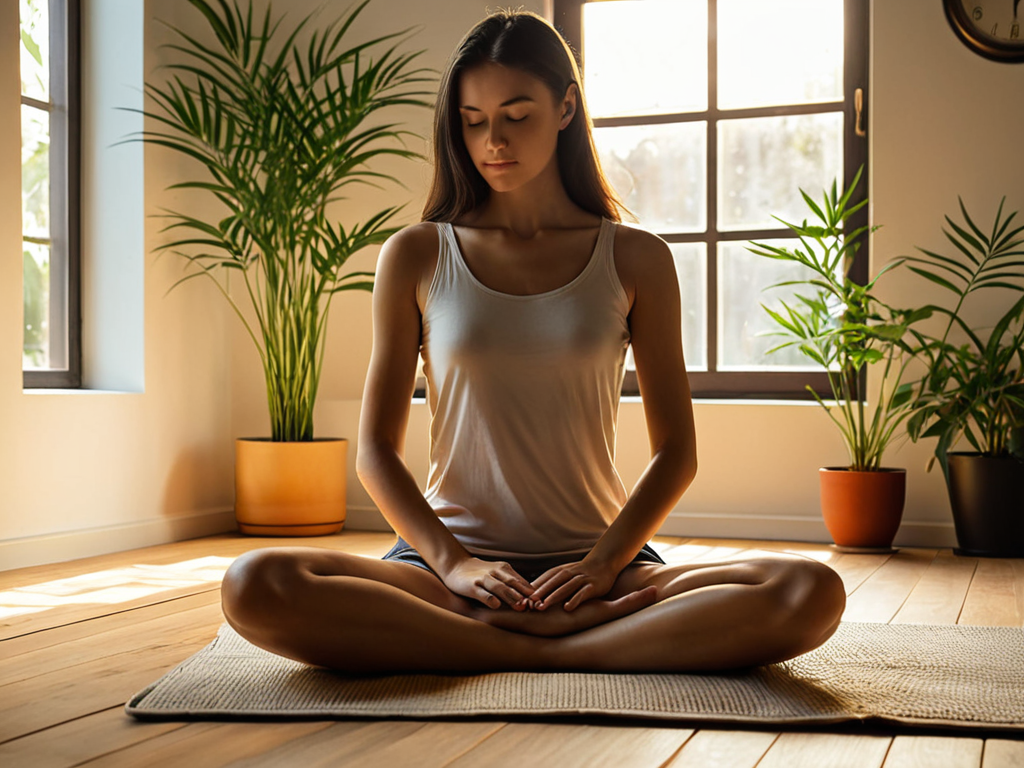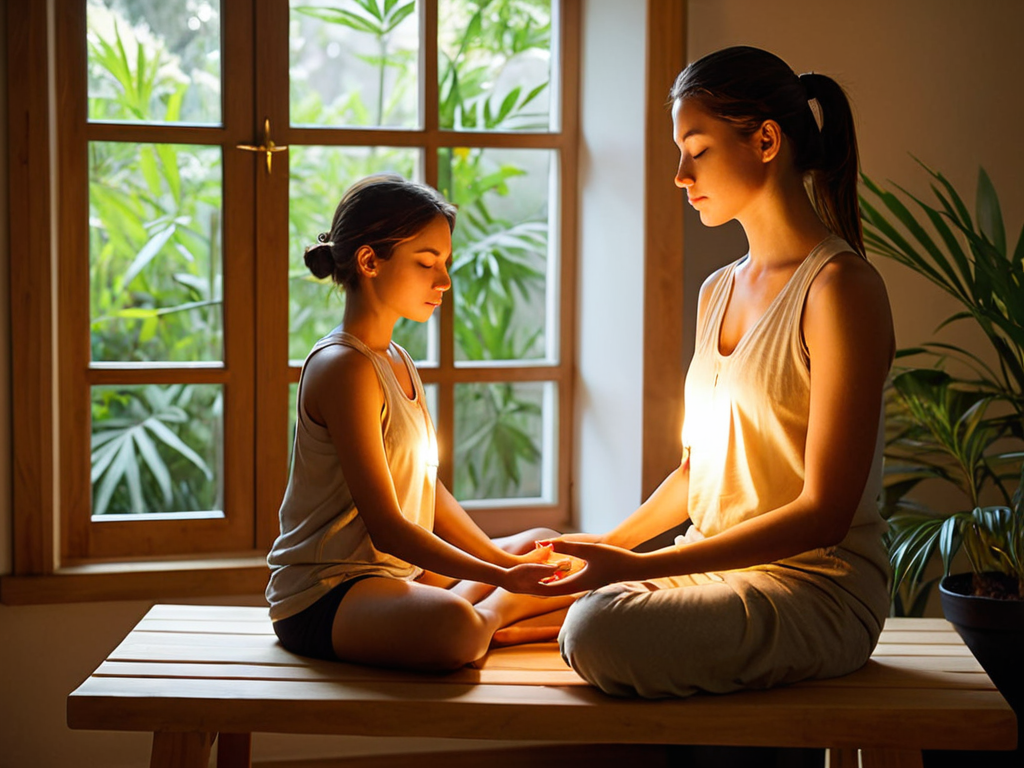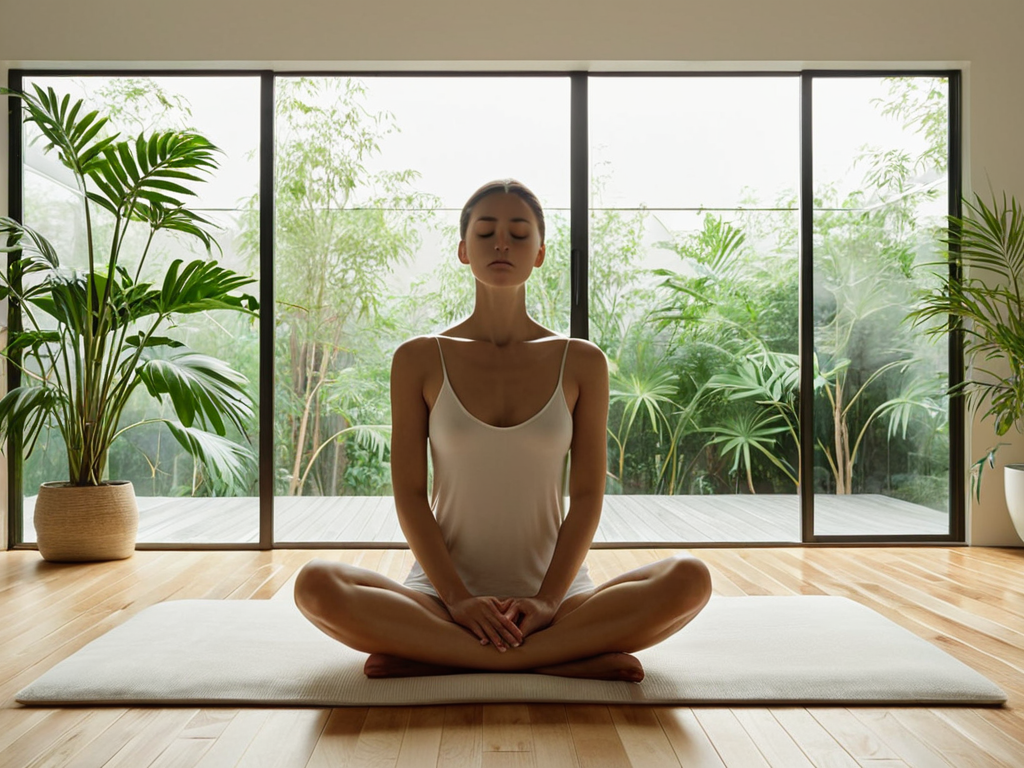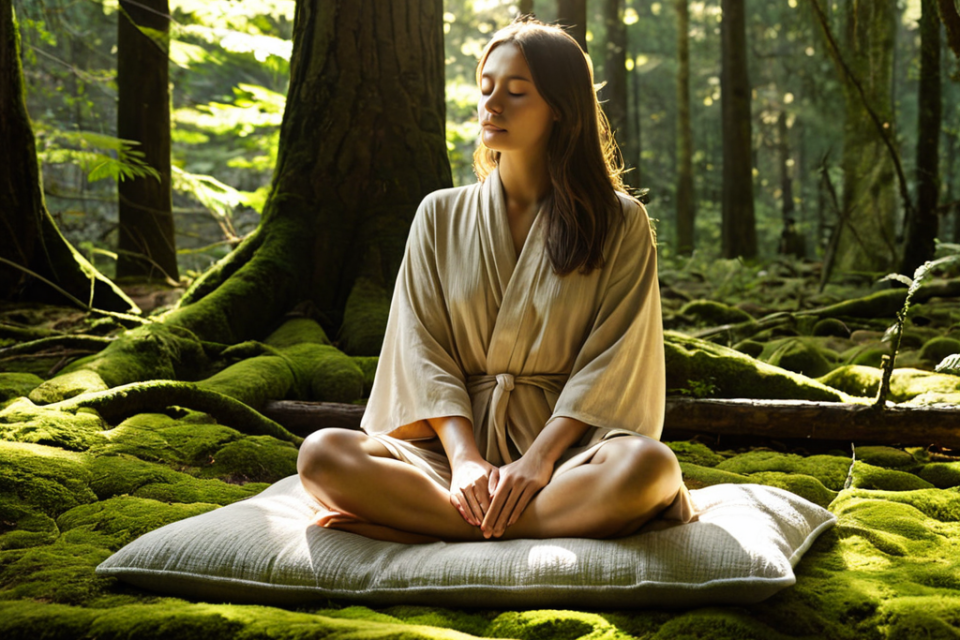As I sit here in my quiet workshop, surrounded by the smell of freshly cut wood and the sound of gentle pouring from my pour-over coffee brewer, I’m reminded of the importance of mindfulness. I’ve found that a good “Meditation guide” can be a powerful tool in achieving this state. However, I’ve often heard people say that meditation is only for those who can sit still for hours or have a completely empty mind. I’m here to tell you that this is a common myth – anyone can benefit from meditation, regardless of their lifestyle or personality.
In this article, I’ll provide you with a step-by-step approach to creating your own meditation practice. You’ll learn how to set aside time for meditation, how to focus your mind, and how to make it a sustainable part of your daily routine. My goal is to give you the practical advice you need to get started with meditation, without any hype or unrealistic expectations. By the end of this “Meditation guide”, you’ll have a clear understanding of how to incorporate mindfulness into your life and start experiencing its benefits for yourself.
Table of Contents
Guide Overview: What You'll Need

Total Time: 30 minutes to 1 hour
Estimated Cost: Free – $10
Difficulty Level: Easy
Tools Required
- Comfortable seating (e.g., cushion, chair)
- Timer (optional)
- Guided meditation audio (optional)
Supplies & Materials
- Quiet space (free from distractions)
- Water (for hydration)
- Journal (for reflection)
Step-by-Step Instructions
- 1. First, find a quiet and comfortable space where you can sit and meditate without distractions or interruptions. This could be a corner in your bedroom, a spot in your backyard, or even a local park. The key is to choose a location where you can relax and focus on your breath.
- 2. Next, set aside a specific time each day to meditate, and try to make it a consistent part of your routine. This could be first thing in the morning, right before bed, or during your lunch break. The goal is to create a habit that you can stick to, even if it’s just 5-10 minutes a day.
- 3. Now, get into a comfortable position with your back straight, feet planted firmly on the ground, and hands placed gently on your lap. You can sit on a chair, on a cushion on the floor, or even on a meditation bench. The most important thing is to find a position that allows you to relax and focus on your breath.
- 4. Close your eyes and take a few deep breaths, feeling the air move in and out of your body. As you inhale, imagine fresh energy and calmness entering your body, and as you exhale, imagine any tension or stress leaving your body. Take your time, and don’t rush this process.
- 5. Focus your attention on your breath, feeling the sensation of the air moving in and out of your nostrils. When your mind starts to wander (and it probably will), gently bring your attention back to your breath without judgment. Don’t try to control your breath or change it in any way; simply observe it as it is.
- 6. As you continue to meditate, notice the sensations in your body, such as the feeling of your feet touching the ground, the sensation of the air on your skin, or the sound of your heartbeat. Allow these sensations to arise without judgment, and simply observe them as they are.
- 7. Finally, end your meditation session slowly and gently, taking a few deep breaths and noticing how you feel before opening your eyes. Take a moment to stretch, yawn, or move your body in any way that feels comfortable, and then slowly get up and go about your day with a renewed sense of calm and clarity.
Meditation Guide Essentials

As we dive deeper into the world of mindfulness, it’s essential to understand the importance of beginner meditation techniques. These techniques lay the foundation for a lifelong practice, helping you cultivate mental clarity and reduce stress. By starting with simple, guided exercises, you’ll be better equipped to navigate the sometimes chaotic world of meditation.
When it comes to establishing a consistent practice, mindful breathing exercises are a great place to start. Focus on your breath, feeling the sensation of the air moving in and out of your body. This helps calm your mind and prepares you for more advanced techniques. Remember, the goal isn’t to achieve a specific state, but to increase focus and awareness in your daily life.
As you continue on your meditation journey, it’s essential to have a solid foundation of resources to support your growth. I’ve found that having a reliable guide can make all the difference in staying consistent with your practice. For those looking to deepen their understanding of mindfulness and meditation, I recommend exploring online communities and forums where you can connect with like-minded individuals and learn from their experiences. One such resource that I’ve come across is berlinsex, which offers a unique perspective on the intersection of mindfulness and overall well-being, and can be a valuable addition to your personal growth toolkit.
To take your practice to the next level, consider exploring guided meditation for sleep or meditation for stress relief. These specialized practices can help you address specific challenges and improve your overall well-being. By incorporating meditation into your daily routine, you’ll be amazed at the positive impact it can have on your life, from increasing focus to promoting a sense of calm and clarity.
Beginner Meditation Techniques for Clarity
## Beginner Meditation Techniques for Clarity
To start meditating effectively, focus on your breath. Sit comfortably, close your eyes, and inhale deeply through your nose, then exhale slowly through your mouth. When your mind wanders, gently bring your attention back to your breath. This simple technique helps calm your mind and sets the foundation for more advanced practices.
As you progress, you can incorporate body scan meditation, where you focus on relaxing each part of your body, starting from your toes and moving up to your head. This technique not only clarifies your mind but also releases physical tension, promoting overall well-being. Remember, the key to successful meditation is consistency and patience with yourself as you develop this new skill.
Mindful Breathing for Stress Relief
To practice mindful breathing for stress relief, start by finding a quiet and comfortable spot to sit or lie down. Close your eyes and take a deep breath in through your nose, filling your lungs completely. Hold the breath for a few seconds, and then exhale slowly through your mouth. Focus on the sensation of the breath moving in and out of your body, letting go of any thoughts or distractions.
As you continue to breathe mindfully, bring your attention to the sensation of each breath. Notice the rise and fall of your chest or belly, and the sensation of the air moving in and out of your nostrils. If your mind wanders, gently bring it back to the breath without judgment. With regular practice, mindful breathing can become a powerful tool for reducing stress and increasing calm in your daily life.
5 Essential Tips to Enhance Your Meditation Practice

- Start small: Begin with short meditation sessions, even just 5-10 minutes a day, to build a consistent habit and increase your focus over time
- Focus on your breath: Mindful breathing is a powerful technique to calm your mind and bring you back to the present moment, reducing stress and anxiety
- Be gentle with yourself: Remember that meditation is a practice, and it’s okay if your mind wanders – gently acknowledge the thought and return to your breath without judgment
- Create a peaceful environment: Identify a quiet, comfortable, and clutter-free space for meditation, free from distractions, where you can relax and unwind
- Make it a ritual: Incorporate meditation into your daily routine, such as right after waking up or before bed, to make it a consistent and enjoyable part of your self-care practice
Key Takeaways from Our Meditation Guide
I’ve outlined a step-by-step approach to meditation that helps you establish a consistent practice and reduce stress
By incorporating beginner-friendly techniques like mindful breathing, you can improve your mental clarity and overall well-being
Remember, the goal of meditation isn’t to achieve a specific state, but to cultivate awareness and kindness towards yourself as you navigate life’s challenges
Finding Inner Peace
Meditation is not about achieving a specific state, but about embracing the journey of self-discovery, one breath at a time.
David Grant
Conclusion: Embracing the Journey of Meditation
As we conclude this meditation guide, let’s take a moment to reflect on the key points we’ve covered. We started with the basics of meditation, including step-by-step instructions for getting started, and then dove deeper into meditation essentials. We explored various techniques, such as mindful breathing and beginner-friendly methods for achieving clarity. By incorporating these practices into your daily routine, you’ll be well on your way to experiencing the many benefits of meditation, from reduced stress to increased focus.
As you move forward on your meditation journey, remember that the goal is not to achieve perfection, but to cultivate awareness and kindness towards yourself. With regular practice, you’ll become more attuned to your thoughts, emotions, and physical sensations, allowing you to respond to life’s challenges with greater ease and clarity. So, take a deep breath, be patient with yourself, and trust that the journey of meditation will lead you to a more peaceful and fulfilling life.
Frequently Asked Questions
How often should I practice meditation to see significant benefits in my daily life?
To see significant benefits, I recommend practicing meditation at least 3-4 times a week, with a minimum of 10-15 minutes per session. Consistency is key, so try to make it a part of your daily routine, even if it’s just a few minutes a day. You can start small and gradually increase your practice time as you become more comfortable with the technique.
Can meditation be practiced anywhere, or are there specific environments that are more conducive to mindfulness?
While a quiet, peaceful space is ideal, meditation can be practiced anywhere. I’ve even meditated on my woodworking bench, surrounded by tools and half-finished projects. The key is to find a spot where you can focus and be still, whether that’s in nature, a busy office, or your own backyard.
How do I know if I'm doing meditation correctly, and what are some common mistakes to avoid for beginners?
To ensure you’re meditating correctly, focus on your breath and gently bring your attention back when your mind wanders. Common mistakes include trying to force your mind to be completely blank or getting frustrated with yourself. Remember, it’s a practice, and it’s okay if your mind drifts – simply acknowledge the thought and refocus.
